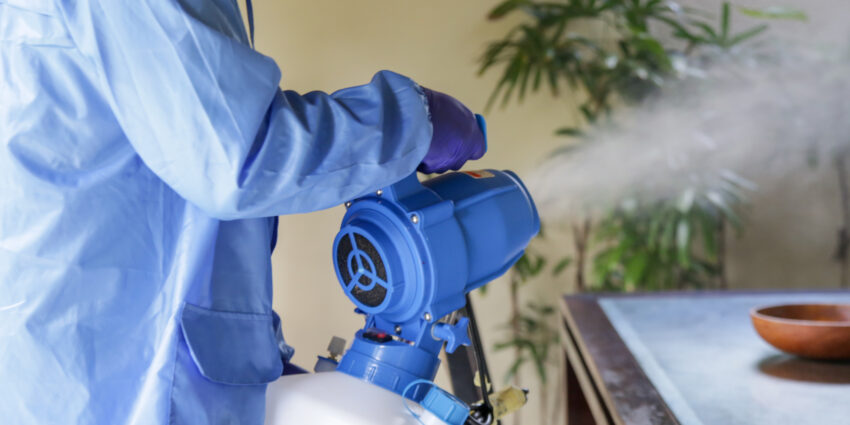Introduction
Hypochlorous acid (HClO) is a weak acid that forms when chlorine dissolves in water and partially dissociates to form hypochlorite, which is a common oxidizer and the primary disinfection agent in chlorine solutions. Hypochlorous acid possesses strong antimicrobial properties and, as a result, is used as the primary ingredient in many commercial disinfectants, cleaners, preservatives, and deodorizers.
Disinfectant and Antiseptic Properties
There has been extensive research on the efficacy of hypochlorous acid and its bacteria-killing capabilities. The disinfecting properties of hypochlorous acid have been evaluated by regulatory agencies, healthcare institutions, professional organizations, independent laboratories, and academic institutions in more than 50 countries. As of December 2020, more than 2,600 publications in peer-reviewed scientific journals address the extraordinary potency and safety of hypochlorous acid as an antimicrobial agent in the fields of environmental disinfection.
Since hypochlorous acid is a weak acid, it is also used for a variety of healthcare and medical applications when used at low concentration. Hypochlorous acid is approved by the United States Food and Drug Administration (FDA) for wound care, use in eye care and veterinary care products, food preservation, and organic crop production.
In addition to destroying bacteria, like other disinfectant solutions hypochlorous acid has proven effective in destroying other microorganisms such as mold, fungi, and viruses. During the recent coronavirus pandemic hypochlorous acid has emerged as one of the most potent and environmentally safe disinfectant available, with a wide range of efficacy against many human pathogens, including the SARS-CoV-2 coronavirus.
Method of Application
There are multiple ways that hypochlorous acid can be effectively used or delivered as a disinfectant. The most common applications include direct contact with a contaminated surface in the form of a solution, which is applied directly to the surface with a spray bottle or applied using a cloth wipe. Another common application is through the process of “fogging”, either as a dry fog or fine wet-mist fogging.
Dry fog consists of droplets that are 10 to 15 microns in diameter and are so small that they create a seemingly dry fog. Dry foggers are ideal to use in locations that require the fog to cover a large area. This is because the smaller droplets will be able to diffuse widely and travel quite far with air currents and wind. The downside to dry fogging is that the fog might not thoroughly cover the entire area that requires disinfection.
On the other hand, wet-mist foggers emit droplets that are 20 to 30 microns in diameter and appear as a fine mist when applied. These larger diameter droplets are good for applications such as disinfection, including mold control, as larger droplets mean that the fog will wet specific surfaces and coat them thoroughly with the disinfectant solution. Most cold or Ultra Low Volume (ULV) foggers create wet mist.
Each of these fogging applications is a proven and effective means of disinfecting, sanitizing, and deodorizing large areas. The added benefit of fogging compared to direct application is that it does not require rinsing or wiping, and it is safe enough to use around humans, animals, plants and even surfaces that come in direct contact with food or other edible products.
Environmental and Human Health Safety
Although hypochlorous acid possess strong disinfectant properties, it is also environmentally safe. Unlike other harsh disinfectants like bleach or other chlorine-based products, hypochlorous acid is a highly reactive molecule and short-lived when exposed to the environment. Upon exposure to air, skin, or other surfaces, pure hypochlorous acid degrades within minutes to sodium chloride (NaCl) and water, a relatively benign and non-reactive salt water that closely resembles the composition of human tears. As a result of this rapid reactivity, hypochlorous acid poses no risk of environmental contamination. In addition, utilizing hypochlorous acid does not require the use of Personal Protective Equipment (PPE), it can be transported and stored as a non-hazardous material, and can be disposed of with no risk of generating hazardous waste.
Conclusion
Based on our research and prior experience with clients and projects that utilize hypochlorous acid as a means of disinfection, the fogging disinfection method used by A Restoration Touch in their indoor remediation process will be effective in reducing air-borne contaminants (bacteria, mold, and viruses) emanating from contaminated materials such as wood, drywall, and insulation. When combined with direct contact disinfection (spraying and scrubbing), fogging with hypochlorous acid-based disinfectants is an important step in the remediation process and will effectively reduce the risk of adverse health effects in workers exposed to microbial contaminants present in contaminated areas.

